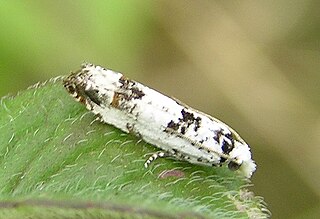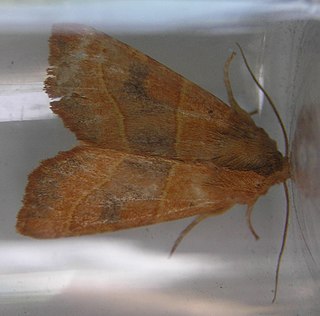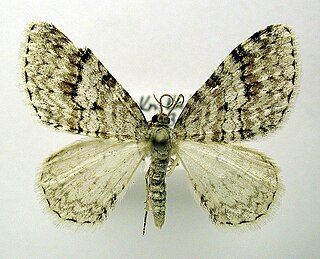
The Group of Seven (G7) is an intergovernmental political forum consisting of Canada, France, Germany, Italy, Japan, the United Kingdom and the United States; additionally, the European Union (EU) is a "non-enumerated member". It is organized around shared values of pluralism, liberal democracy, and representative government. As of 2020, G7 members are large IMF advanced economies and account for over half of global net wealth, 30 to 43 percent of global gross domestic product, and 10 percent of the world's population. Its members maintain mutually close political, economic, diplomatic, and military relations in global affairs.

The G20 or Group of 20 is an intergovernmental forum comprising 19 countries and the European Union (EU). It works to address major issues related to the global economy, such as international financial stability, climate change mitigation and sustainable development.

Eucosma is a very large genus of moths belonging to the family Tortricidae. Some taxonomies place a number of species in the genus Eucopina. The genus has a Holarctic and Indomalayan distribution. Even in well-studied Europe and North America, new species are still regularly discovered. There are at least 670 described species in Eucosma worldwide.

Crocidosema plebejana, the cotton tipworm, is a tortrix moth, belonging to tribe Eucosmini of subfamily Olethreutinae. It is found today all over the subtropical and tropical regions of the world and even occurs on many oceanic islands – in Polynesia and Saint Helena for example – but has probably been accidentally introduced to much of its current range by humans. In addition, it is also found in some cooler regions, e.g. in Europe except in the east and north; this is probably also not natural, as it was, for example, not recorded in the British Isles before 1900.
Archernis is a genus of moths of the family Crambidae.

Atethmia is a genus of moths of the family Noctuidae. The genus was erected by Jacob Hübner in 1821.
Metachrostis is a genus of moths of the family Erebidae first described by Jacob Hübner in 1820.

Simyra is a genus of moths of the family Noctuidae. The genus was described by Ochsenheimer in 1816.

Venusia is a genus of moths in the family Geometridae erected by John Curtis in 1839.
Actenoptila eucosma is a moth in the Carposinidae family. It was described by Alexey Diakonoff in 1954. It is found in New Guinea.

Eucosma abstemia is a species of moth of the family Tortricidae first described by Edward Meyrick in 1932. It is found in the United States, where it has been recorded from Colorado, Arizona and California.
Eucosma albidulana is a moth belonging to the family Tortricidae. The species was first described by Gottlieb August Wilhelm Herrich-Schäffer in 1851.

Eucosma fulvana is a species of moth, belonging to the genus Eucosma.

Eucosma lacteana is a moth belonging to the family Tortricidae. The species was first described by Treitschke in 1835.

Eucosma tripoliana is a species of moth belonging to the family Tortricidae.
Eucosma krygeri is a species of moth belonging to the family Tortricidae.










